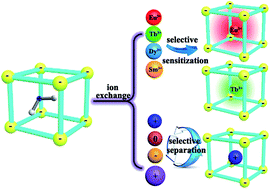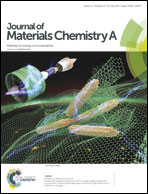An InIII-based anionic metal–organic framework: sensitization of lanthanide (III) ions and selective absorption and separation of cationic dyes†
Abstract
An InIII-based anionic framework (InIII-MOF) with 4-connected SrAl2 topology was constructed. The InIII-MOF with permanent porosity functions as a host for encapsulation of Ln3+ ions through ion-exchange processes. The photophysical properties of the as-prepared Ln3+@InIII-MOF were investigated and the results showed that the InIII-MOF could serve as an antenna to sensitize Ln3+ cations, especially suitable for Tb3+ and Eu3+ ions. The possible sensitization mechanism has been studied by surface photovoltage spectroscopy. Additionally, the InIII-MOF could also act as a host material when applied in the separation and purification of cationic dyes, which is highly based on the size and charge of organic dyes. Moreover, it can be used as a chromatographic column stationary phase to separate cationic dyes more efficiently and selectively. It is believed that the as-prepared InIII-MOF may have potential applications in optical materials and environmental fields.


 Please wait while we load your content...
Please wait while we load your content...